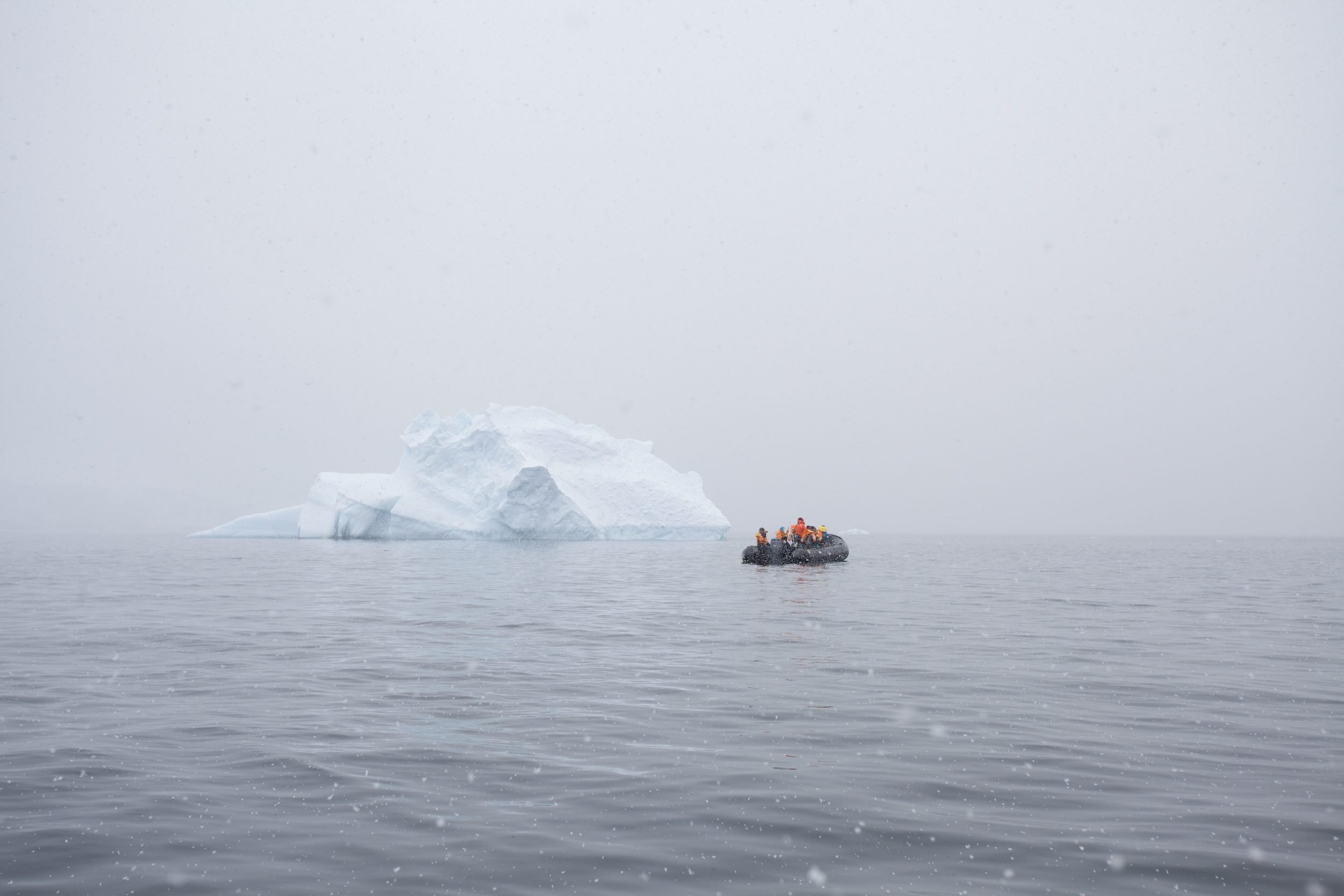The aim of the RCGS Expeditions Program is to expand people’s understanding and insight into Canada’s physical, environmental, and cultural geography. This is achieved by acknowledging and fostering the spirit of exploration and adventure through expeditions primarily conducted within Canada. The Society is once again supporting a stellar lineup of expeditions, providing funding toward eight adventures.

Samuel Lalande-Markon
The 2023 RCGS Expedition of the Year grantee Samuel Lalande-Markon aims to complete the first human-powered crossing of Quebec and to produce a documentary film on the experience and the territory covered. In the first part of the expedition, Samuel aims to cycle 1535 km in 15 days followed by a 1250 km skiing journey over a period of 60 days. During their expedition, Samuel and his expedition partner Simon-Pierre hope to take advantage of the time spent in the Cree and Inuit communities to interact with the people who live there, to offer workshops in schools and to meet the elders.

Kathleen Graham
Close to the Edge is a remote cave in the Dezaiko Range, east of Prince George, British Columbia. It has Canada’s deepest shaft, more than twice the depth of Bisaro Anima’s 105m drop. The remarkable 255m shaft leads to a tight, cold, windy passage that has not been visited in 22 years. Two passages are unexplored and offer an exciting opportunity to extend the known cave system. Using modern techniques Kathleen Graham and her team will rappel, climb, crawl, dig and dive to extend the passage from where it was left on the last trip in Sept 2001.

Nathalie Lasselin
Nathalie Lasselin and her team will explore part of the 1942km2 of water of the hydroelectric reservoir in the middle of the Boreal forest in Quebec. Since being the first to explore and film the underwater submerged forest in 2021, Nathalie has one goal: to be able to reach the ancient shore of the original river during her 2023 expedition.

Shira Biner
Set to depart in June, Shira Biner and her team aim to complete an exploratory alpine rock-climbing expedition of the Coronation Glacier on the east coast of Baffin Island. They will begin their journey in the town of Qikiqtarjuaq from which they will paddle 70 km into Coronation Fjord where they will climb 1000m peaks. By sharing their trip they aim to inspire others to value Canada’s northern landscape.

David Greene
David Greene will lead a team through a 1350km canoe trip from Yellowknife to Baker lake through the heart of Thaidene nëné, Canada’s newest National Park Reserve as well as the Thelon Game Sanctuary, Canada’s largest such protected area. The objective of the expedition is to travel through this area and document the stories in which the land and elders share with us to be shared with our larger global community. They will document through audio, photography and storytelling the ecological and cultural importance of Canada’s Arctic Watershed.

Matteo Agnoloni
The Waddington Range is comprised of the highest and most technical peaks in BC, including the tallest in the province, Mount Waddington (4,019m). The range has a history of cutting-edge alpine climbing, with major ascents dating back to the 1930s. Matteo Agnoloni and his expedition partner Ethan Berman intend to complete a circumnavigation of the nine major peaks in the range, including the 5 Serra Peaks, Tiedemann, Asperity, Combatant, and Waddington. These peaks form a horseshoe, and although they have been traversed before twice, no team has ever completed a full circumnavigation, starting and finishing at the same location, as a big loop. We also plan to climb in the reverse direction as the other two teams, which has never been completed.

Kayla Martin
Kayla Martin will lead a team to explore the three-masted schooner, the OLIVER MOWAT, in the waters of Prince Edward County region of eastern Ontario. Launched from Mill Haven, ON, in 1873, she represents a time capsule of history preserved below the surface in Canada’s most historically significant region of shipbuilding and maritime commerce.
Since her loss in 1921, she has been considered the holy grail for shipwreck hunters of the region. This is the first expedition to the shipwreck since its initial discovery. The first objective will be to capture a photographic record of the site for use in an expedition film and articles. The second objective will be image acquisition to produce a 3D Photogrammetry Model.

Marie-France L’Ecuyer
The Uapishka Project offers an authentic encounter with the Innu people through an intercultural expedition to the heart of the Uapishka Mountains, located north of the 51st parallel on the North Shore of Quebec, in the Nitassinan of Pessamit. With the support of the RCGS, a team of 18 Quebecers, natives and non-natives, will attempt to cross this mountain range in winter over a distance of approximately 55 km on snowshoes, in complete autonomy, during a six-day expedition.
The objective of this expedition is the exploration, discovery and enhancement of Nitassinan, an ancestral territory of inestimable natural and cultural wealth, while aiming for the belonging and reappropriation of the territory by the young people of the Innu community of Pessamit.



